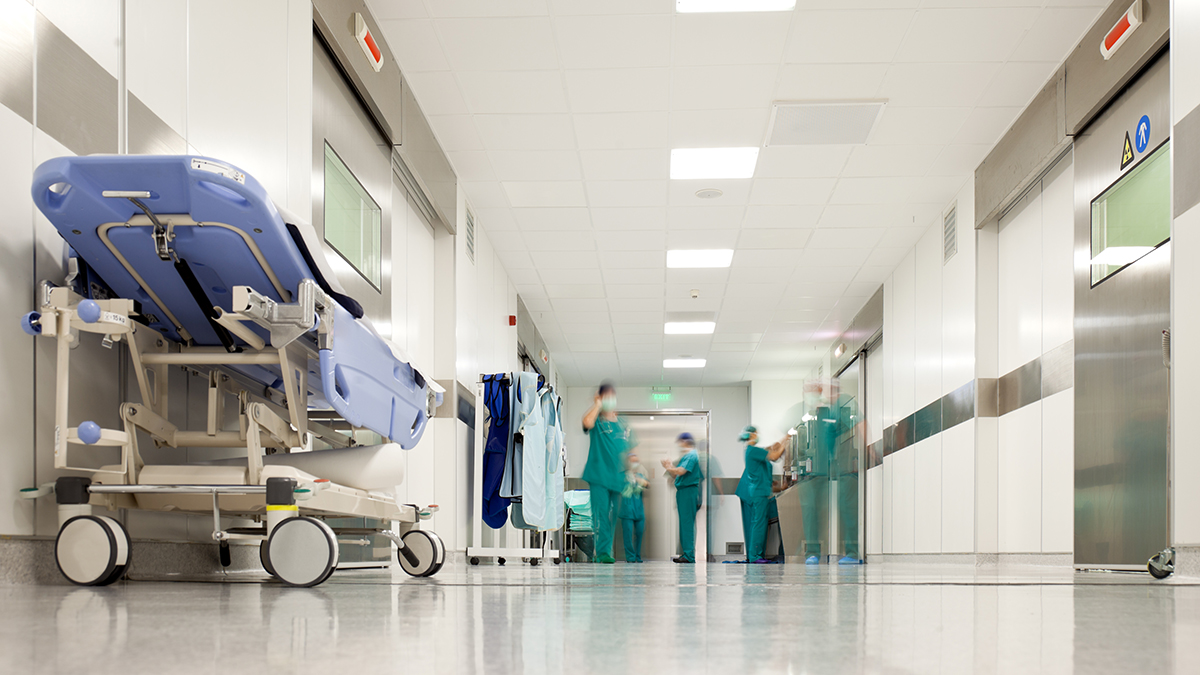Post-viral syndrome: Learning to live with COVID-19 on the NHS

Recent months have exacerbated many of the issues that were facing the NHS before anyone had ever heard the word COVID-19 – and the scars are set to remain long after the country gets “back to normal”.
In the absence of a vaccine or a reliable SARS-CoV-2 test, the UK could be operating a middle-income country health system with all the expectations and regulatory standards of a high-income one.
That was the stark warning of a Nuffield Trust discussion paper, Here to stay? How the NHS will have to learn to live with coronavirus.
“As the number of Covid-19 hospital admissions gradually declines, policy attention is turning to how the NHS can restart some more routine activities, with hospitals beginning to resume elective surgery and cancer treatments,” said the paper’s author, Nuffield Trust chief executive, Nigel Edwards.
“But doing this while living alongside COVID-19 will involve major practical challenges that will need to be overcome.”
Re-starting services and tackling the backlog that has built up in the last few months while maintaining social distancing and minimising risk for staff, all within the context of a health service that was already in crisis, is a mammoth task.
COVID-positive until proven otherwise
The paper, based on conversations with representatives from different parts of the NHS, including a teaching hospital, single and multi-site hospitals, community services and primary care, sets out a litany of challenges.
Among these is that, without a quick or reliable test, health and care staff will have to assume all patients are infected until proven otherwise.
In emergency care, which was already struggling to cope with demand, that means enhanced PPE and extra time for cleaning beds, imaging equipment, and operating theatres between patients.
Patients attending for planned surgery will need to be swabbed, told to self-isolate, then swabbed again, bogging down the burgeoning waiting lists for even the most basic processes and treatments.
Group interventions, from peer support to cardiac rehabilitation, will also need to be redrawn, at the same time as developing new services for those on the long road of COVID recovery.
Said Edwards: “The waiting list for planned treatment was already over 4m going into the COVID-19 outbreak, and at that point approximately 1.6m people a month were starting new care pathways. Most of these people have not had their treatment moved forward since the end of March.
“This combined with the effect of the overall productivity losses… means there will be very large increases in the numbers of patients waiting for treatment once GP referrals return to more usual levels.”
Structural challenges
COVID served to compound many of the issues the NHS was facing before the pandemic hit, such as overburdened A&E services, staff shortages, and buildings that were not fit-for-purpose.
Said the paper: “The aim of good hospital architecture has generally been to create ‘loose fit’ design and generous circulation space to aid the flow of patients through buildings.
“Unfortunately, the NHS has not always followed this and there has been a history of eliminating much of this space in NHS building schemes to reduce costs since the 1970s.”
The result is a lack of single patient rooms, narrow corridors and cramped waiting areas that do not allow for distancing or separate organisation flows for infectious patients.
While reductions in emergency department attendances at the start of the pandemic provided some respite and space for people with COVID-19, it also created a backlog of health problems, and demand will soon begin to rise.
“It will not be safe to return to previous levels of activity due to the physical space constraints… The urgent care system will therefore need to consider other ways of managing overall demand for care and spreading work more evenly across the day,” said the paper.
It’s also worth noting that the NHS went into the crisis with a large number of vacancies and shortages of key staff, it went on.
“Some staff have returned from retirement to assist with the pandemic response, but it is not clear whether they will want to stay once ‘usual’ work returns.
“There is some concern among health leaders we spoke to that, given the recent experience of some staff, there will be increased sickness and that people close to retirement or considering leaving will bring their decision forward.”
The need to protect black, Asian and minority ethnic staff, who have higher levels of mortality, is also of concern to rota planning, particularly in some organisations with a high proportion of BAME frontline staff.
Future policy
There is no doubt that the rapid changes made by the NHS were key to the UK avoiding the devastation seen when healthcare systems in Lombardy and New York became overwhelmed by the crisis.
But as we tentatively get back to normal – whatever that might be – we have to accept that the COVID response will have long-term complications for our healthcare system.
As Edwards said: “This could mean the public having to accept reduced services, health and care staff facing continued and long-term changes to their ways of working, and difficult choices ahead for policymakers in accepting a degree of rationing of healthcare that would previously have been seen as unacceptable.”












